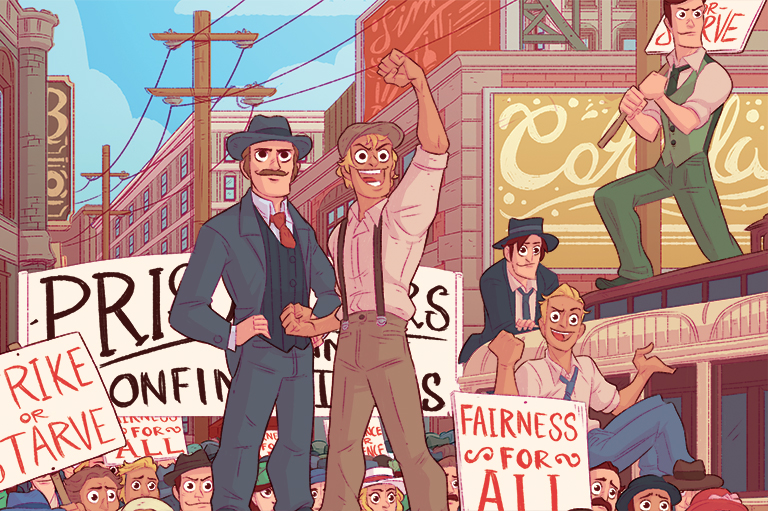Differing Perspectives on the Winnipeg General Strike
This activity is based on the article “Winnipeg on Strike” in the Canada at Work issue of Kayak: Canada’s History for Kids.
Students will analyze multiple accounts of the Winnipeg General Strike, noting important similarities and differences in the points of view they represent. They will use photographs and newspaper articles to determine who was responsible for the violence on Bloody Saturday. Through this activity, they will be confronted with the question, “what happens when primary sources disagree with one another?”
In this activity, students will use primary source evidence to analyze cause and consequence and to consider historical perspectives. To learn more about the six historical concepts, check out the Historical Thinking Project or consider attending the Historical Thinking Summer Institute.
Background:
The Winnipeg General Strike, held from May 15 to June 25, 1919, was the biggest general strike in Canadian history. It was also one of the most influential strikes, creating a platform for future labour demonstrations.
As explained in Kayak, “The strike may not have been seen as a clear success at the time, but it brought change that shapes Canada to this day. Canadian workers and those who had come from Britain stood beside those from other countries who had often been looked down on.
Strikes took place all over the country in support of the Winnipeg workers, bringing their ideas and demands more respect. When the men who had been arrested went on trial, most were convicted, their fates decided by juries who had been chosen ahead of time to ensure they were not sympathetic to the strikers.
But the convictions backfired when several of the men were voted into office in provincial, federal and city elections, even while some were still in jail. Many leaders of the strike helped from the Co-operative Commonwealth Federation, which eventually became the New Democratic Part of today.”
Activity
1. In preparation for the activity, students should be familiar with the following key terms:
- Bloody Saturday
- Bolshevism
- Bolshevist
- Collective bargaining
- Labor
- Labor unrest
- Returned men
- Socialism
- Strike
- Unions
- Veteran
2. As a class, read the Kayak article to provide contextual information on the Winnipeg General Strike.
3. Primary Source Analysis
Divide your students into small groups to analyze the primary sources. Randomly assign each group three of the five documents, ensuring there is a mix between images and newspaper articles. Working together, students will assess the documents using the Evaluating Historical Sources chart to try and answer the question, “who was responsible for the violence on Bloody Saturday?”
4. Group Discussion
Bring your class together for a group discussion. Begin by asking your students to answer the inquiry question, “Who was responsible for the violence on Bloody Saturday?”
Use their answers to delve into some of the following questions:
- What happened according to each source? How are their accounts similar? How are they different?
- Why are they similar or different?
- How reliable are these accounts?
- What would you have thought if you only looked at one of these documents?
- How could we find more information to decide which interpretation to accept?
- Do we have enough evidence to reach a conclusion? If not, identify what other kinds of sources you need to be more certain of your answer.
- Who’s perspective is missing in these documents?
5. Assessment
Have students fill out the What Happened on Bloody Saturday worksheet.
Students fill out the T-Chart to compare the different versions of what happened on Bloody Saturday. In the left column, they note the key details according to those who supported the strike. In the right column, they write down the key details according to those who opposed the strike.
Ask students to write a paragraph in their own words that describe what happened on Bloody Saturday. Remind them to support their ideas with evidence from the primary sources.
Themes associated with this article
Advertisement






